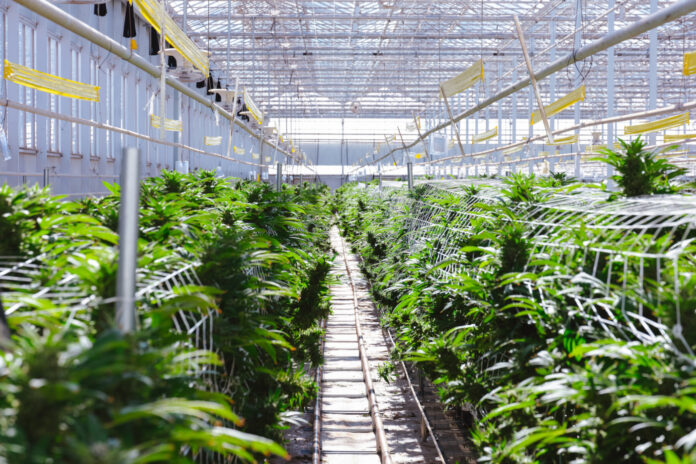How to Find Your Real Cost of Cannabis Cultivation
November 24, 2025

For too long, cannabis cultivators have chased the wrong numbers. Yield, grams per square foot, and production volume are easy metrics to celebrate. But what if those indicators have been misleading us all along? Across the industry, operators are scaling losses instead of profits. The issue isn’t effort or innovation. It’s a lack of true cost clarity.
In many grow operations, profitability exists as a hopeful estimate rather than a verified fact. Products that appear profitable on paper often lose money because key expenses such as overhead and indirect labor are miscalculated or ignored.
When I ask cultivators how much it costs to produce a single gram, I usually receive a guess. When I ask how labor is allocated or how material inventory is tracked, I hear a sigh. Many still expense inventory at receipt instead of consumption, which distorts profit-and-loss statements. Others assume clones are “free” because mother plant costs are buried in overhead. Small mistakes add up quickly.
If true costs aren’t visible, operators risk producing more of what only looks profitable. In an era of price compression and rising operational costs, that’s a formula for slow collapse.
It’s time to retire the idea that yield equals profit. Yield measures production, not performance.
From biotech to agriculture to cannabis, I have learned that quantity means nothing without context. A strain may produce a massive harvest, yet still lose money if inputs such as energy, nutrients, or labor outweigh the returns. The same applies to product lines. If cost data and sales data are not paired, operators are managing in the dark.
As my colleague Clark Charlton said, “Sales show what you made. Costs show what it took to make it.” Only when the two are paired can cultivators identify which strains, rooms, or processes deliver real profit, not just revenue.
One of the biggest blind spots in cannabis accounting is overhead. In many operations, 30–60 percent of total costs hide there in rent, depreciation, utilities, indirect labor, and machinery.
Often, these expenses are left unallocated or ignored. Yet every gram should carry its fair share of cost. When overhead remains a lump sum spread evenly over all batches, operators lose sight of which products are truly pulling their weight.
If you can’t see where time, materials, and overhead are consumed, you can’t know where profit is created or where it is leaking out.
Most tech stacks in cannabis were built for compliance, not profitability. They track what regulators require, not what operators need to make smart business decisions. A few systems capture direct labor and materials but ignore overhead.
Relying only on direct costs is like solving a puzzle with half the pieces missing.
True cost intelligence demands precision. It means tracking from the mother plant to the final package, capturing every input of time, material, labor, and overhead, and connecting them to real output. When cultivators understand how each step contributes to cost, they gain a tool more valuable than any yield metric: insight.
The most successful operators treat cultivation as a business discipline, not just a craft. They study their strains the way a restaurant studies its menu, cutting what underperforms, refining what delights customers, and perfecting the recipes that deliver consistent results.
You don’t need 50 strains to run a profitable grow. You need the right few. Think of simplicity, consistency, and knowing the margin on each item you sell. The goal is not to grow more, but to grow smarter.
The cannabis industry is maturing, and with that maturity comes accountability. Financial literacy and operational transparency are becoming the new standard of care.
Technology can accelerate that shift, but it is not a substitute for leadership. The best operators use technology as a feedback tool, turning data into decisions that drive performance. When used this way, it gives leaders the clarity to guide their teams, refine their systems, and continually improve the balance between quality and profitability.
Emerging markets can leap ahead by adopting these practices now and learning from the mistakes of legacy operators. The cultivators who thrive over the next decade will treat cost data as seriously as compliance data, because both determine survival.
Cannabis has evolved from an underground movement into a sophisticated agricultural industry. It deserves operational excellence and accountability equal to any other regulated field. That begins with the truth of what it really costs to produce the products we are proud of.
The path forward is simple. Stop guessing, start knowing. Profitability is not a mystery. It’s a measurable outcome of disciplined decisions, transparent data, and the courage to face what the numbers reveal.
Knowledge is not just power. It’s profit.
-
What is the true cost of cannabis cultivation?
The true cost of cannabis cultivation includes every input required to bring a product from seed or mother plant to packaged unit. This covers direct costs — such as labor, nutrients, grow media, and energy — and indirect costs, including rent, depreciation, overhead labor, maintenance, and compliance-related expenses. Most operators underestimate costs because overhead is unallocated or spread evenly across batches. True cost accounting assigns each gram its fair share of all expenses, revealing which strains and rooms are truly profitable.
-
Why doesn’t yield equal profit in cannabis growing?
Yield measures volume, not performance. A strain may deliver a large harvest but still lose money if the cost of inputs outweighs the revenue it generates. Profitability depends on the balance between output and cost. Without pairing yield data with cost data, operators can unknowingly scale unprofitable production. Profit comes from efficiency and margin, not just biomass.
-
What expenses do cultivators commonly overlook?
The most commonly overlooked expenses include overhead (rent, utilities, depreciation, indirect labor), non-standard labor allocation, mother plant maintenance, equipment wear, shrinkage, and the true cost of in-house cloning and propagation. Many operators also expense materials at receipt instead of consumption, which distorts batch-level profitability and masks the real cost per gram.
-
How does overhead affect cultivation profitability?
Overhead is often the silent profit killer. In many grows, 30–60 percent of total expenses live in overhead categories. When these costs aren’t accurately allocated to each batch or strain, operators get a false picture of profitability. Unallocated overhead makes high-cost strains look profitable, low-cost strains look mediocre, and operational issues remain invisible. Proper overhead allocation gives cultivators a realistic view of what each gram actually costs to produce.
-
How can cultivators calculate the real cost per gram?
Real cost per gram is calculated by combining direct costs (labor, materials, nutrients, energy) with allocated overhead (rent, depreciation, utilities, indirect labor) and dividing by the actual output of each batch or room. Operators need systems that track inputs from mother plant to consumer package, ensuring every minute of labor and every material consumed is accurately assigned. Tools built for true cost intelligence — not just compliance — make this process repeatable and transparent.
Kate O’Connor-Masse is the co-founder and chief executive officer at BatchNav. Drawing from her experience in biotech and agriculture, she helps cannabis operators achieve profitability through data-driven insight and operational discipline.
Search
RECENT PRESS RELEASES
Related Post





